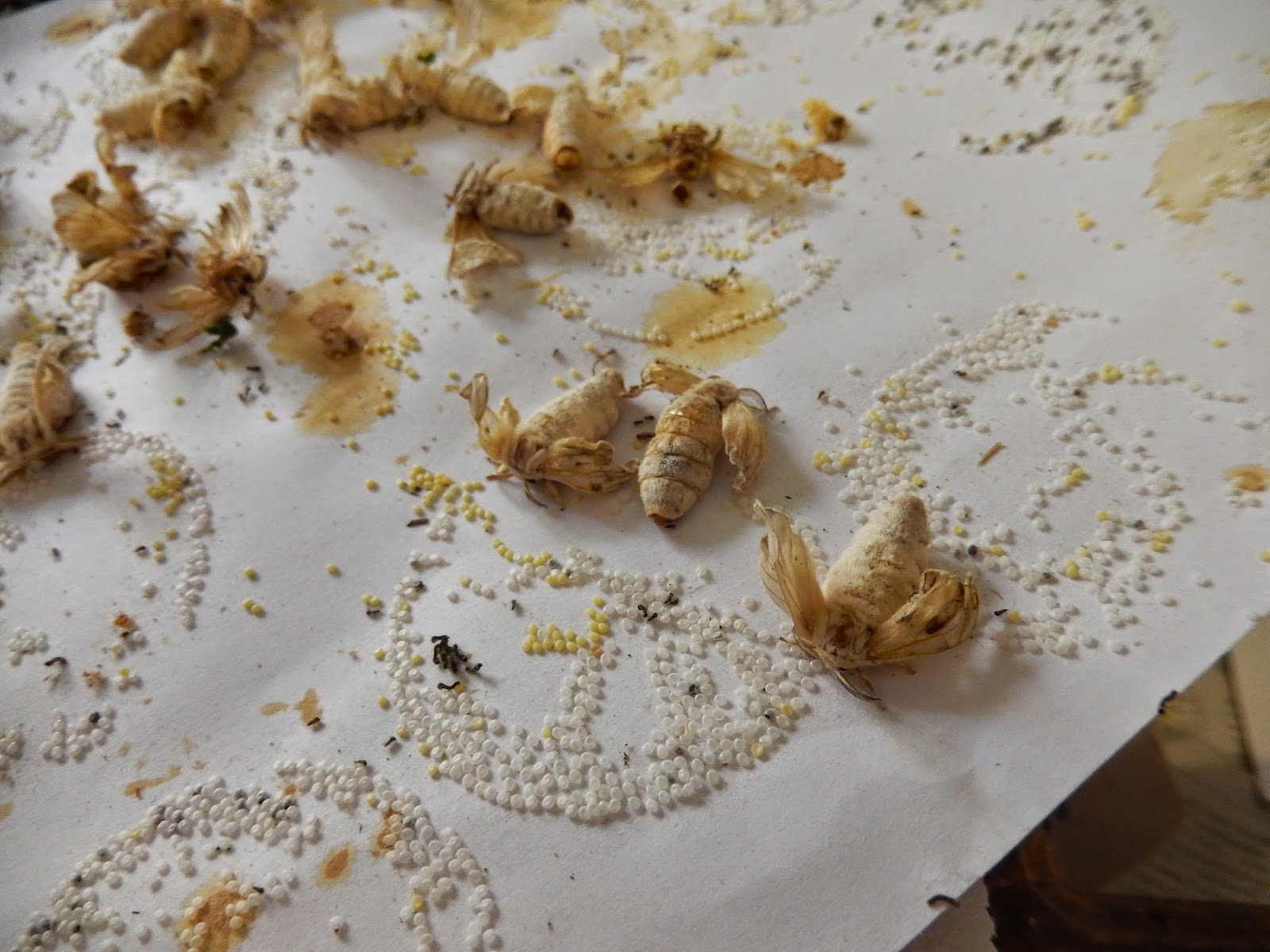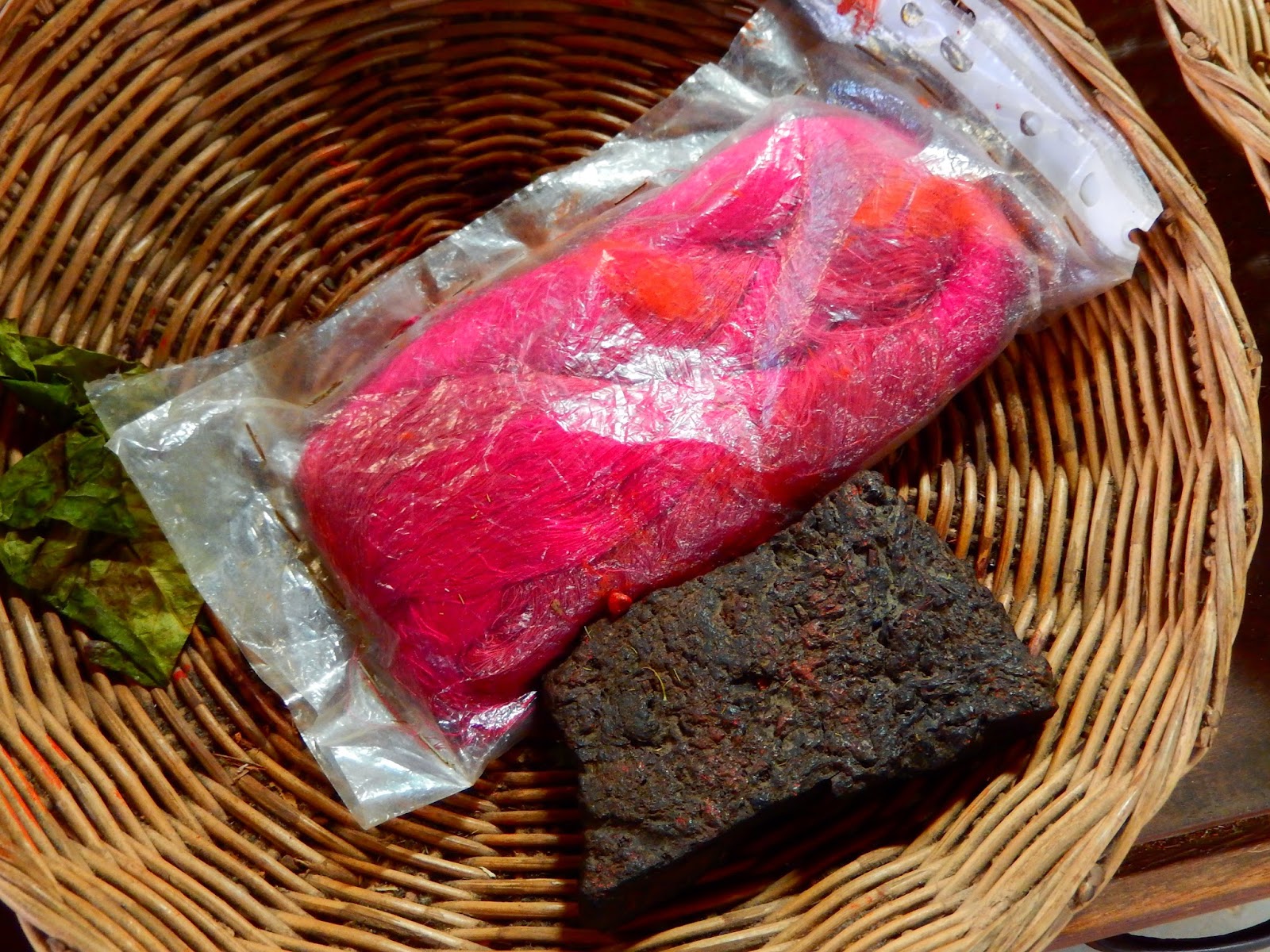My first day in Cambodia, in my first hour in Cambodia, I went and visited a silk farm just outside Siem Reap. The place,
Angkor Silk Farm, not only produces silk, but trains people from around Cambodia in making silk, empowering them to later return to their communities and start their own silk comapies in their respective villages. The place was amazing!
I had a personal tour guide, Roath, who took me around the farm for an hour and patienty answered my overwhelming number of questions about every detail of the silk farm. I took notes during my tour and will now share all of my new found knowledge with you! Here goes:
The Angkor Silk Farm was orignally started in 1992 by the government as a way of training it's citizens in a new trade and helping the Cambodian silk industry. It has historically received funding from the EU and UN as well, but no longer received financial support from any of these places. Since it's inception in 1992 it has trained over 400 people in the silk industry. The orgnaization used to train both men and women in the trade but now only accepts female apprentices for it's programs as they are more likely to succeed in the industry.
When you first start the tour you are brought to a field of mulberry trees, the main food for the silk worms. Although silk worms can eat many other things, mulberry trees provide the best food for creating the best quality silk. Although the trees can get very large in the wild, they are kept quite small on the farm as the leaves are picked off and fed to the worms and keeping the trees smaller makes it easier for collecting the leaves. In nature, the worms would live on the trees, but the threat form predators is quite high so they are kept in houses at the silk farm where they are safe from birds and other hungry animals.
Mulberry Tree.
Each worm produces 400 meters of silk in it's lifetime. After hatching from it's egg (up to 90% of the eggs hatch in captivity - much higher, I am sure, than in the wild), the silk worm feeds for 24 days in cycles of 3 days eating, one day resting. After 24 days of eating and resting, the worm them creates it's cocoon which is made of silk. If the worms were allowed to live past this stage - as some are for reproduction purposes - they would then turn into a moth. To keep the silk usable, however, the worm must be killed while it is still in it's cocoon. This is done by placing the silk worm cocoons out in the sun to dry/bake/die. In the wet season 20% of the worms are allowed to live into moth-hood, in the dry season 15% (as there isn't as much food to feed them), to reproduc and lay enough eggs to sustain the population.
Silk moths on the papers where they lay their eggs. The tiny little black worms are the newly hatched wilk worms.
Silk moths, their eggs, and then small silk worms in the background on mulberry tree leaves.
Hatching silk worm eggs.
Silk worms eating.
Unhatched silk worm eggs. Each moth lays around 200 eggs and 80-90% hatch when kept at the correct temperature using the aircon.
The cocoon that the silk worm makes is made up of two types of silk - raw silk and fine silk. The raw silk is the silk on the outisde of the cocoon (the lighter colored silk) and this is about 100 meters of the total 400 meters of silk thread. The other 300 meters is made up of the fine silk, which is a rich yellow color. The color is different in different countries, depending on the worms and their diets, the soil, etc.... In some countries the raw silk is very valuable, in others it is the fine silk. In Cambodia, the fine silk is much more valuable than the raw silk.
Silk worm cocoons.
A close up. The brighter yellow is the fine silk, the lighter yellow is the raw silk.
Silk worm cocoons that have hatched. The darker areas are the holes were the moth emerged from the cocoon. This silk is now unusable becuase the worm hatched out as a moth.
Silk worm cocoons drying in the sun to kill the worm and allow the silk to be used.
After the worms die, the cocoons are then processed to seperate the raw and fine silks from eachother, and to start the thread making processes. First the raw silk is removed from the outside of the fine silk and then the fine silk is unwound. This is done by floating the cocoons in hot water and slowly grabbing at the silk thread to ply it away from the ball it is wound into and then slowly and carefully unwinding the entire cocoon. One the raw and fine silk has been unwound, only the silk worm is left. In some countries, like Korea, the silk worms are eaten.
Seperating the raw silk from the ouside of the cocoon.
Look towards the top of the photo and you can see all the silk threads being wound together.
Cocoons of fine silk. If you look closely in the water you can see a few silk worms floating.
The silk threads that are unwound from the cocoons are then combined with any number of other threads to create the desired thickness. They are cleaned and died (usuing natural dies) and then wound onto large spools for use in the weaving process.
Silk thread next to resin which creates a the nice color.
Curry used to create the orange color of the silk.
Resin covered silk at it's natural color. This silk was very coarse, like horse hair.
Lots of spools of thread being combined to create silker thread.
And a close-up of the process.
The ladies at work!
And the finished product - very, very long silk threads.
One the thread is ready to go, it is then prepared for the dying and weaving process. For silk pieces wtih complicated patterns, it can take up to 5 days to prepare and dye the silk to create the correct pattern. To make the pattern, the silk is tied off with small pieces of plastic and then dyed. What is covered with the plastic does not change color, what is not covered does. Then they continue to dye one color over the other, having to cover and recover each section they do not want to change color with each new dye process. If a mistake is made, the entire silk piece is then dyed black and used for a fully black piece. This prevents waste but also decreases the profitabiliy of the piece. Because of this, it is very important that the weavers are very carefully while they work. If a mistake is made at the end of the dying process, up to five days of hard work can be wasted.
Tying off the silk pattern for the first round of dying.
Now tying off the pattern for the second color.
The finished pattern.
Once the silk is dyed, it is then prepared for the weaving process. Once ready for the weaving process, it can take up to another 5 days to weave a complicated pattern. The weavers were absolutely amazing! The pace with which they worked, managing so many different spools of died thread with various patterns was incredible. I cannot imagine ever, even after a year of training, being able to keep all of that straight. Just amazing!
Unwinding the dyed silk threads so they can be prepared for the weaving process.
A weaver hard at work.
And another. You can see all the different threads she had right in front of her. They are all a different pattern and she has to keep them all straight. Amazing!
A weaver's work station. On the piece of paper in front of her is the pattern - very complicated!
And amazingly complicated weaved pattern.
Then, once the weaving process is finished, they are ready to be sold. The most complicated of scarf patterns were being sold for USD $119. I'm not sure how pricey that is compared to a nice silk scarf back in the states, but being able to see people working on it, knowing that is all hand done, and knowing that you are contributing to the advancement of an industry is really neat. And, you can special order any color or pattern you would like. Great gift for yourself or someone else. If you ever go to Siem Reap, plan this one hour activity into your trip!
.jpeg)
.jpeg)
.jpeg)
.jpeg)
.jpeg)
.jpeg)






























